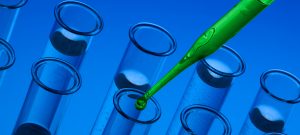5th April 2020 – Identifying people at high or low risk may be a game-changer
A Blog by Dr David J Flavell PhD FRCPath
Charity & Scientific Director of Leukaemia Busters
5th April 2020
Biomarkers and You

It’s a fact that more than 80% of people who become sick with COVID-19 will have mild to moderate symptoms and will recover, possibly with long term immunity to re-infection. A minority of around 20% will progress to developing serious symptoms that require hospitalisation with some needing ventilator life support and very sadly maybe as many as quarter of these losing their life to the fatal pneumonia this virus causes.
The big question on every health professionals lips is how do you identify which patients are likely to progress to develop severe illness?
If we had what’s known in the trade as a biomarker, something we could measure in individual patients that would tell us this then we could separate the 20% high risk group from the 80% low risk. This separation would then guide clinical needs and also ultimately allow low risk individuals to mingle more freely in the community knowing that they were very unlikely to develop life threatening illness while the high risk individuals who possessed the biomarker could be protected by isolating.
The thing is that at this moment in time there is no reliable biomarker to tell us this. However, with the extensive global research now underway this is likely to change and already there are glimmers of hope for some candidate biomarkers that are coming through in the medical literature that I’m monitoring every day.
One such promising candidate is blood group. Publications on research conducted following the 2002/03 SARS outbreak due to a similar coronavirus (Cheng et al (2005), JAMA, 293,1450 http://www.ncbi.nlm.nih.gov/pubmed/15784866 ) and very recent research in 2,173 individuals during the current outbreak in Wuhan (Zhao et al (2020) MedRxiv pre-print https://www.medrxiv.org/content/10.1101/2020.03.11.20031096v2 ) seem to suggest that individuals with an O blood group are significantly less likely contract COVID-19 than are individuals with an A blood group.
These are very preliminary findings and should not yet be taken as concrete evidence but they do provide a glimmer of hope. More research is needed to independently confirm these findings, something that should be relatively easy to undertake in other populations outside of China where there are plenty of patients for which information about blood group and severity of COVID-19 should be readily available. As I write this blog there’s bound to be some research group somewhere in the world doing just this and I shall report on the results as they become available.
Yet another biomarker is the concentration of certain natural hormone-like chemicals called cytokines and chemokines in the blood of infected patients that alter in a way that appears to predict whether a patient will go on to develop severe life-threatening pneumonitis (Huang et al (2020) Lancet 395, 497 http://www.ncbi.nlm.nih.gov/pubmed/31986264) . These chemicals are produced naturally by white blood cells and are an indication of how active and in what way the patient’s own immune system is reacting to the virus. There will almost certainly be other biomarkers discovered over the course of the coming weeks and I’ll keep you up to date with what these might be as time goes on.
What is certain is that a reliable, cheap and easily applied biomarker to identify and separate those individuals at low and high risk from COVID-19 would allow a return to some normality in our lives, as lockdown restrictions could be eased for those identified to be at low risk. This is an important emerging story that could be the game changer we are waiting for – watch this space!


